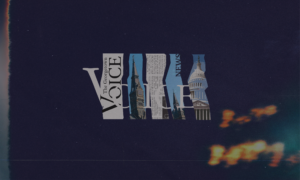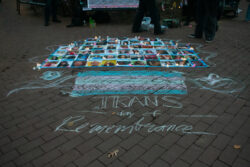Concern about the closures of D.C. Public Schools has increased after more than half of District students who attended 10 out of 13 public schools that were shut down in June did not re-enroll in any DCPS schools for the 2013-2014 school year.
According to statistics provided by D.C. school officials, only 44 percent of these students have re-enrolled in public schools. This figure is barely half of D.C. Public Schools Chancellor Kaya Henderson’s goal for 80 percent retention, which she set earlier this year in conjunction with the closure of 15 public schools in the next two years.
The release of this new data has inflated community discontent towards Henderson’s policies regarding public education in the District, especially because the closed schools were all located in low-income neighborhoods.
Henderson has argued that these policies are intended to consolidate public schools and reduce expenses from operating multiple under-enrolled schools. However, critics argue that the bleak re-enrollment numbers show that students have been adversely affected instead. Transportation and logistics become a larger concern for parents as students transition to commuting the longer distance to their new schools.
“Because a lot more funding is concentrated in charter schools, the D.C. public school system is being left at the wayside,” said former D.C. Reads volunteer Jimmy Ramirez (COL’15). “For example, one of the schools [D.C. Reads] worked in, Kenilworth, was shut down last year. These elementary school-aged kids were forced to walk under a Metro station through a very dangerous part of town to a new public school since their families couldn’t afford to send them to a charter school.”
Additionally, because these different schools are unfamiliar, many families are uncomfortable with sending their children to unknown turf and are apprehensive about how well their children may readjust.
“By closing schools, which often serve as community centers, Chancellor Henderson is blatantly choosing to abandon historically underserved neighborhoods. In a city already distinctly divided along socioeconomic and racial lines, shutting down public schools is representative of a larger issue of de facto segregation,” said D.C. Reads coordinator Allison Liotta (COL‘15).
Theoretically, the free alternative to public schools is charter schools, which has become an increasing focus of government resources and rising choice of D.C. families. However, charter schools accept students on a lottery system, which means only lucky students can actually gain admission.
“Getting children into a school is becoming harder and harder for parents,” said Daniel del Pielago, Education Organizer of Empower D.C., a grassroots organization that has been running a campaign against public school closures. “Charter schools are a lot tougher to enroll in because they are not ‘schools of right.’ The lottery system they work upon is a big concern for the D.C. community because education is losing the fundamental element of freedom it has always had.”
Critics of privately owned charter schools claim that such schools do not offer equal opportunities to enter for all. As a result, affected families and other community members have argued that students living in largely neglected communities are being left behind.
D.C. Reads coordinators and volunteers are working to defend the rights of the children they tutor, but some students taught by D.C. Reads Volunteers have expressed discontent, and even outrage, at the new changes.
“Many of the kids I work with in D.C. Reads feel completely undervalued. One of the little girls I work with, Imani, once slammed a book shut and threw it to the floor screaming, ‘It doesn’t even matter if I learn how to read!’ showing how discouraged she feels in an academic setting,” said D.C. Reads volunteer Maya Davenport (SFS’16). “The school closures only make the problem worse by taking away the little hope that the kids do have.”





